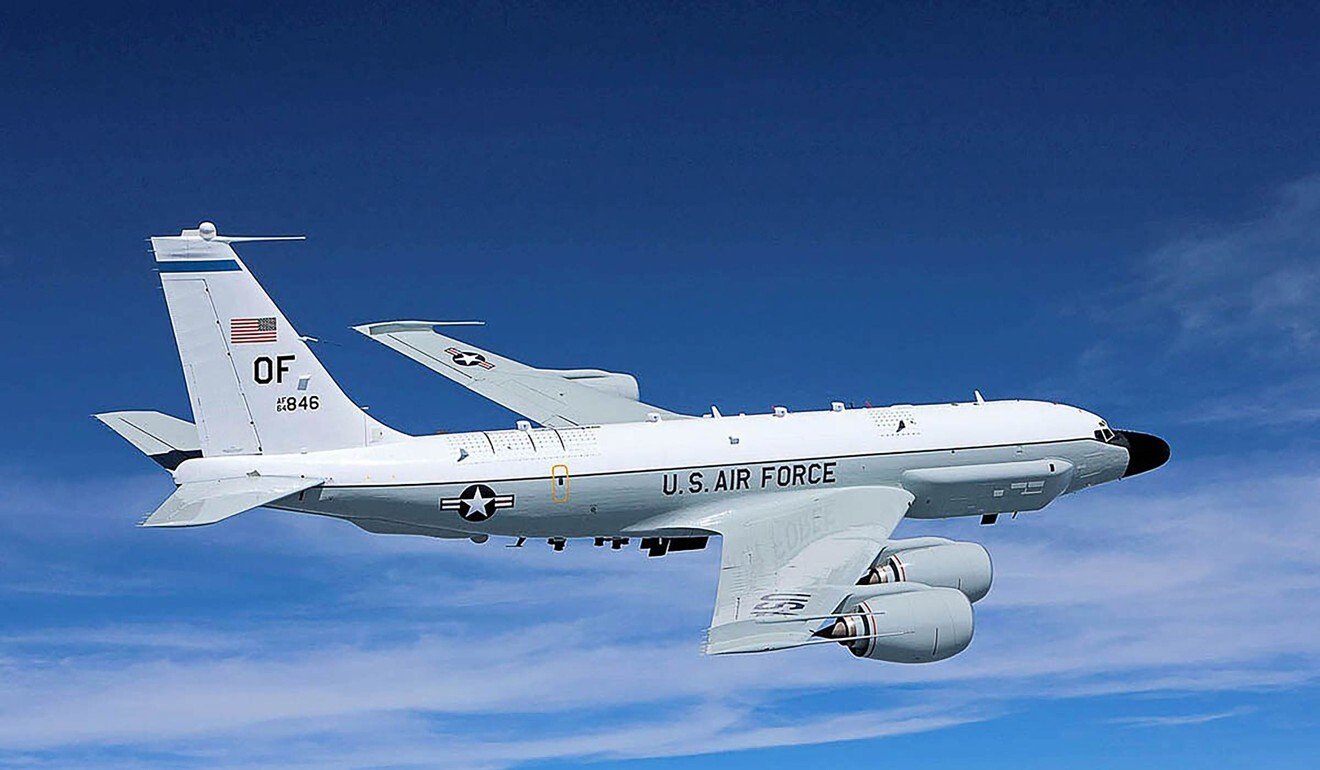
US to make greater use of drones to spy on China, experts say
- US Navy said on Friday that two MQ-4C Triton drones had been temporarily relocated from Guam to the Misawa base in northern Japan
- Use of large unmanned reconnaissance aircraft will ‘increase the risk of miscalculation or friction with Chinese forces’, academic says
The US Navy said on Friday that two MQ-4C Triton drones had been temporarily relocated from Guam to the Misawa base in northern Japan. It was the first time the high-altitude long endurance (HALE) unmanned aerial vehicles (UAVs) had been deployed to Japan, it said.
“The Triton is an unarmed, unmanned aerial reconnaissance system that provides the Japan-US alliance with enhanced maritime surveillance capabilities,” it said.
On Tuesday, a Triton was recorded accompanying two P-8A anti-submarine patrol aircraft, an EP-3E electronic reconnaissance aircraft and a USAF RC-135W electronic reconnaissance aircraft on a mission over the South China Sea. It focused on the southern end of the Taiwan Strait, and flew close to the Chinese coast near the PLA naval port of Shantou.
The Tritons will join other US naval spy planes at Misawa airbase in Aomori, near the northern tip of Honshu Island, including the manned P-8A Poseidon maritime patrol aircraft, “giving the navy an opportunity to test out the capability over more congested waters and other different environmental factors”, the US Navy statement said.
This move is targeted at “the increasingly active maritime activities by surrounding countries”, the Pentagon said in an apparent reference to China.

The Triton is based on the US Air Force’s RQ-4 Global Hawk HALE UAVs and adapted for use by the navy. It has enhanced wings and frame, de-icing and lightning protection systems that enable it to travel through cloud and closer to sea level to better detect, track, classify and identify ships and other targets in all weather.
The drone carries advanced active phased array antenna radar, cameras and sensors to watch over vast ocean and coastal regions. It is remotely operated by a crew of four, with an endurance time of over 24 hours and a maximum operational range of more than 15,000km (9,300 miles).
Meanwhile, the US Air Force (USAF) has also seasonally deployed its Global Hawks based in Guam to Japan since 2014 and this years’ mission is set to start soon.
“Pacific Air Forces will rotate RQ-4 Global Hawks to Yokota AB, Japan, from Andersen AFB, Guam, due to the more favourable weather in the Kanto region during typhoon season and to maximise their ability to support theatre-wide operations,” a USAF spokesman said last week.
The primary focus of the Global Hawks in Japan is to spy on North Korea, but with their advanced sensors, they could easily collect data beyond North Korea’s border with China from South Korea.
The US’ moves reflect a growing trend for greater use of drones for reconnaissance as the US Navy looks to increase its surveillance of China according to military observers.
Large UAVs equipped with advanced optical, electronic and radar sensors could replace the manned EP-3E Orion electronic reconnaissance aircraft on regular missions, and they are cheaper to dispatch and safer to pilot.
“But for more complex jobs, such as anti-submarine, the UAVs can’t manage, and larger manned planes are necessary, said Song Zhongping, a former PLA instructor.
“To deal with the US spy drones, China will have to use either optical deceptions, electronic countermeasures or even capture or tackle them down if they get too close,” he said.
“On the other hand, the PLA also has its own reconnaissance drones, which makes it a two-way thing.”
US-China rivalry: will America’s new ‘floating base’ heighten tensions?
In 2017, Japan protested against Chinese coastguard vessels flying drones near disputed islands in the East China Sea and the Japanese Air-Self Defence Force scrambled an F-15 fighter jet to monitor them.
But the increased military tension between Beijing and Washington had raised the temperature. Over the past year there have been frequent drone sorties over the South China Sea and near the coast of China, according to Hu Bo, director of Beijing-based think tank the South China Sea Strategic Situation Probing Initiative, which monitors aviation activity in the region.
“The regular use of large unmanned reconnaissance aircraft will certainly increase the risk of miscalculation or friction with Chinese vigilance forces,” he said, adding that from a military perspective, the US military did not need to keep such a high frequency of aerial reconnaissance and approach so close to China given its advanced reconnaissance methods and capabilities.
“The purpose of such activities has gone beyond mere intelligence gathering into adding political pressure and military coercion on China,” he said.
“Because of the obviously hostile intention of the US operations, China’s responses are also not primarily to assert legal claims or control the relevant sea and airspace, but more out of concern for security concerns.”

